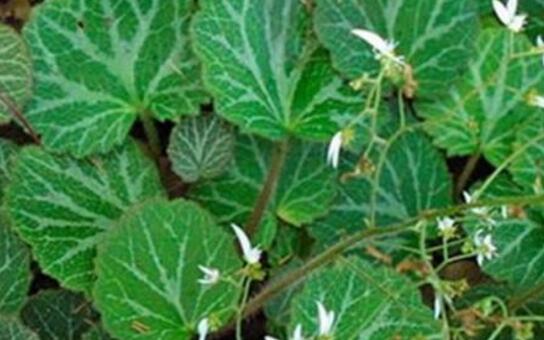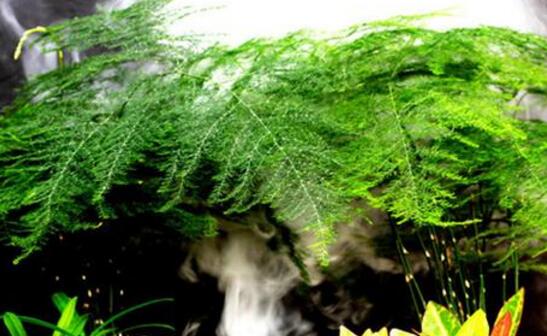What to do when Saxifraga grows worms? pest control of Saxifraga / 2 spraying techniques
Under normal circumstances, the leaves of Saxifraga are green and reddish purple, but if there are diseases and insect pests, the leaves may turn yellow and fall off, so what about Saxifraga worms? It is urgent to remove insects and change maintenance methods. Next, the editor introduces several common pest control methods of Saxifraga.
What if Saxifraga grows worms?

If the environment is humid and cool, the growth of Saxifraga is relatively normal, but it is inevitable that there will be environmental changes or improper maintenance, which may lead to pests on the leaves, so what if Saxifraga grows worms? Insecticidal and preventive measures are necessary, but at present, the main pests of Saxifraga are whitefly and whitefly.
1. Pink scale
Symptoms: there are things like cobwebs on the leaves, the leaves are shrunk and dry, only the meridians can be distinguished, and white pests appear on the back of the leaves, which is often called pink scale.
How to prevent and cure: the withered and yellowed leaves should be cut off in time, and some infected leaves can be diluted to 1500-fold solution with a concentration of 40%. You can also use a solution diluted to 800x with a concentration of 25% Eckass EC.
Note: Saxifraga should be carefully checked when buying, the soil and utensils used for potted plants should be sterilized, and the potted soil dried in the sun can effectively kill the eggs and the mother.
2. Whitefly
Symptoms: the leaves appear green yellow and white spots, and then the spots will spread into pieces, and then the leaves will be pale and fall off, Saxifraga leaves how to do? Here are the detailed methods.
How to prevent and cure: ① is sprayed with 20% chlorpromazine wettable powder diluted into 1500 times solution, ② diluted into 1000 times solution with 25% EC, and imidacloprid wettable powder diluted into 1500 times solution with 10% ③ concentration.
Note: whitefly should be controlled in time, the solution should be sprayed every 10 days, usually 2-3 times to remove the pest, but also pay attention to follow-up conservation, otherwise pests may make a comeback.
Pest control of Saxifraga
The leaf is the main part of Saxifraga which is responsible for breathing. Once a disease occurs, it will lead to dyspnea, and there are two common diseases, namely Botrytis cinerea and powdery mildew. Therefore, these two kinds of pest control are mainly used in Saxifraga.
1. Powdery mildew
Symptoms: powdery mildew usually occurs in the leaves, tender stems, flower stalks, buds, petals and other places of Saxifraga, which starts with small irregular yellow-green markings, then expands, then powdery spots, and finally many black spots; the leaves will wrinkle and become smaller, the color is grayish white or dirty white.
How to prevent and cure: when ① is maintained, chlorothalonil can be sprayed on the stem to prevent; when powdery mildew occurs in ②, 15% strychnine can be diluted into 1000 times solution to spray; ③ can also be diluted with 35% alcohol to 1000 times solution every 3-6 days, which can be adjusted according to the infection until the powdery spot disappears.
2. Grey mold
Symptoms: the edge of Saxifraga leaves appear semicircular, round or irregular-shaped spots, the color of the spots are dark green or brown; the spots will gradually spread, eventually causing the whole leaf to become dark brown or even rot, and gray mildew layer appears in the infected place.
How to prevent and cure: ① cut off diseased leaves, change basin soil, strengthen conservation, make the environment more ventilated, and increase soil moisture; ② is sprayed with 28% gray mold wettable powder diluted into 800x solution, do not let the medicine touch the leaf center when spraying.
Conclusion: in fact, the focus of pest control of Saxifraga should be on prevention, and prevention needs to cultivate good habits in the usual process of planting. If there is a major change in the environment where Saxifraga is located, we must pay attention to whether the environment is suitable for its growth, otherwise it should be moved to another place for breeding.
Introduction of several diseases and insect pests of Saxifraga, as well as the prevention and control methods of diseases and insect pests, how much do we know about Saxifraga? Saxifraga is an evergreen flower with scaly leaves and red and pink flowers. It is a good potted flower. It is not only an ornamental plant, but also the whole grass can be used as medicine. Today, I would like to take you to understand the pest control methods of Saxifraga.
1. Grey mold
(1) symptom manifestation
Botrytis cinerea is mainly harmful to leaves. Spots often occur along the leaf margin, semicircular or round to irregular, water-routed, dark green to brown. When the humidity is high, the disease part expands rapidly and the whole leaf becomes dark brown and rotten, and the disease part produces a gray mildew layer.
(2) Prevention and control methods
Once the disease spot is found, the diseased leaves should be cut off in time. Strengthen the ventilation treatment to keep the humidity of the soil and growing space suitable. The 800-fold solution of 28% gray mold gram wettable powder can be used for chemical control. When spraying chemicals, you should be careful not to sprinkle on the leaf center, so as to avoid causing the leaf center of the plant to blacken.
2. Powdery mildew
(1) symptom manifestation
Powdery mildew occurs in leaves, tender stems, flower stalks, buds, petals and other parts, the initial yellow-green irregular spots, the edge is not obvious. Subsequently, the disease spot continued to expand, the surface produced powdery spots, and finally the director produced numerous black spots.
The infected area turned gray and covered its surface with unclear edges, showing dirty white or grayish white. When the damage was serious, the leaves shrank and became smaller, the shoots were twisted and the flower buds could not bloom.
(2) Prevention and control methods
The growth period can be prevented by spraying chlorothalonil and brushing on the stem of the plant. When the disease occurs, 15% trimethoprim 1000-fold liquid, 2% antimycin water agent 1000-fold liquid, 10% multi-antimycin 1000-1500 times liquid can be sprayed. As a result of repeated use of traditional medicine to produce antibodies to bacteria, the effect is sharply reduced, so alternate use is advocated.
In addition, 1000 times liquor (35% alcohol content) can be used, spray every 3 to 6 days, spray 3 to 6 times continuously, and rinse the leaves until there is no white powder.
3. Pink scale
(1) performance of insect pests
Females and larvae cluster on the back of the leaves and suck sap. Male worms have wings and can fly. The sucked leaves are like cobwebs, which are withered and withered, leaving only some meridians, which are very ugly. Pink scale has white sticky powder in vitro, which can contaminate the surface of leaves and induce other diseases.
(2) Prevention and control methods
In Saxifraga purchase, introduction, transportation, gifts and other exchanges, it is necessary to carry out careful inspection to put an end to the introduction of insect sources, in order to prevent its spread. Select the most suitable pot medium and disinfect it scientifically. Such as composting culture soil and other organic matter, should be fully fermented and sterilized by high temperature or medicament to kill eggs or reproductive mother. During the nymph incubation period, 40% of the EC was sprayed or irrigated with 1000 to 1500 times of EC or 25% of Icas EC.
4. Whitefly
(1) performance of insect pests
When the nymphs sucked the sap of leaves, fruits and twigs, the injured leaves appeared yellow and white spots, which expanded into pieces with the aggravation of the damage, and then the whole leaves were pale and early falling; the flavor quality of the damaged fruits decreased, and the young fruits often fell off. Excreting honeydew can cause coal fouling disease.
(2) Prevention and control methods
Early pests: when the whitefly occurred sporadically, 20% buprofezin wettable powder 1500 times or 25% mifen EC 1000 times, 2.5% Uranus EC 3000-4000 times, 2.5% fenvalerate EC 2000-3000 times, 20% fenvalerate EC 2000 times, 10% imidacloprid wettable powder 1500 times, once every 10 days, continuous control for 2-3 times.
The above are several diseases and insect pests of Saxifraga collated by me, as well as their control methods. I hope they can be helpful to the majority of flower friends. Please continue to pay attention to the succulent flower bed and learn more about flower conservation.
Control of main diseases and insect pests of Saxifraga
Diseases include Botrytis cinerea, leaf spot, powdery mildew and rust. 65% Dysen zinc 500 times solution can be used to control gray mold and leaf spot disease, and 15% strychnine 800 times solution can be used to control powdery mildew.
The main pests are whitefly and whitefly.
- Prev

What to do when Platycodon grandiflorum grows? pest control of Platycodon grandiflorum / 2 insect pests and 3 diseases
Platycodon grandiflorum is a highly ornamental flower with rich colors, which can be seen in many gardens in our country. However, if there are diseases and insect pests in beautiful flowers, there will also be the phenomenon of yellowing and wilting, about the long insects of Platycodon grandiflorum, how to control the diseases and insect pests of Platycodon grandiflorum?
- Next

What to do when asparagus grows insects? disease and pest control of asparagus / not paying attention to fear of death of the whole plant
Asparagus insect or disease is a very troublesome thing, it will not only make the leaves yellow, but also may lead to the death of asparagus, so we must pay enough attention to it, so what should we do if it grows? Today, we will introduce several common pest control methods of asparagus.
Related
- Fuxing push coffee new agricultural production and marketing class: lack of small-scale processing plants
- Jujube rice field leisure farm deep ploughing Yilan for five years to create a space for organic food and play
- Nongyu Farm-A trial of organic papaya for brave women with advanced technology
- Four points for attention in the prevention and control of diseases and insect pests of edible fungi
- How to add nutrient solution to Edible Fungi
- Is there any good way to control edible fungus mites?
- Open Inoculation Technology of Edible Fungi
- Is there any clever way to use fertilizer for edible fungus in winter?
- What agents are used to kill the pathogens of edible fungi in the mushroom shed?
- Rapid drying of Edible Fungi

